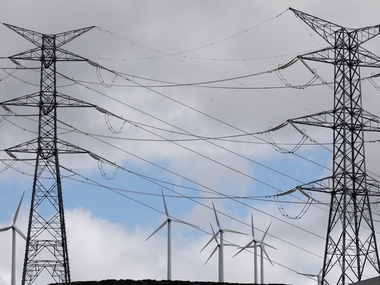Don’t tell us we didn’t alert you. For nearly a year now, Firstbiz has been tom-tomming the virtues of tax-free bonds (read here ), and how they ought to be part of the top-bracket taxpayer’s debt portfolio. A story in The Times of India today (3 November) tells us their prices have soared well above face value, which means investors who took our advice are sitting on huge capital gains. But even today, there is still some juice left to squeeze out of tax-free bonds.
In fact, given a scenario where weak global oil prices are leading to a drop in inflation, the chances are that sometime next year (2015), the Reserve Bank of India will have to start cutting interest rates to boost flagging growth. This means bond prices will start rising to adjust to the new lower rate expectations.
The government of India’s benchmark 10-year bond is already down to 8.29 percent today , and some experts are predicting that if global growth stays low and commodity prices remain weak, the 10-year bond’s yield to maturity will fall to a range of 7.5-8 percent. A Balasubramanian of the Birla Mutual fund is quoted by ET Wealth today as giving a range of 7.5-8 percent, and Dwijendra Srivastava, CIO, Debt, Sundaram Mutual Fund, has predicted 7.5-7.8 percent “one year down the line…if things play out as expected.”
Put these thoughts together, and there is still a good case for tax-free bonds, despite the fact that they are all quoted in the stock markets at hefty premia to their face value.
Today, the 9.01 percent National Housing Bank (NHB) bond (face value: Rs 5,000), maturing in 2034, is quoted on the National Stock Exchange at Rs 6,218; the NHAI 8.75 percent bond maturing in 2029 (FV: Rs 1,000) at Rs 1,187; the Hudco 8.20 bond (maturing in 2029) at Rs 1,120, and the REC 2027 bond (coupon 7.38 percent) at Rs 1,060.
These bonds are quoting at yields to maturity (YTM) in the range of 7.1-7.4 percent approximately), which, at the highest tax bracket of 34 percent (30 percent tax plus cesses, et al), gives you a pre-tax return of anywhere between 10.75 percent and 11.2 percent (these are not exact figures, but indicative).
Now, consider what fund managers like Balasubramanian and Srivastava have been predicting. If they expect yields on the 10-year (taxable) government of India security to go down to 7.5-8 percent in a year from 8.29 percent today, it means bond prices are bound to rise.
Tax-free bonds, which are not guaranteed by the government (and hence cannot be treated as bonds with no default risk), are, however, close to being sovereign bonds for they are issued only by companies that are owned by the government. National Housing Bank (NHB), the National Highways Authority of India (NHAI), the Rural Electrification Corporation (REC) and the Indian Railway Finance Corporation (IRFC) are all blue-blooded government companies that no government can allow defaults in. Moreover, they are all profitable and well run.
So juxtapose these figures: a taxable government bond yielding 7.8 percent (which is 5.2 percent post-tax), against tax-free bonds yielding 7.1-7.4 percent today. A 9 percent bank fixed deposit gives you a post-tax yield of around 6 percent if you are in the top tax bracket. Even discounting for a one percent premium between sovereign yields and quasi-sovereign tax-free bond yields, and there is nowhere for tax-free bonds to go but up in terms of market prices.
This means people buying well-traded tax-free bonds today will benefit not only from higher yields, but also capital appreciation.
Is there a downside? Yes. If, for some reason, interest rates rise rather than fall, then these bonds will fall in value, and yields will rise.
For risk-averse investors, I would recommend these bonds only if you are willing to hold them to maturity, or are willing to take the risk of a capital loss.
But, on balance, I believe these risks are worth it for pensioners who want the income rather than the capital gain, and for investors willing to accept some degree of some risk,
In any event, given the premia at which these bonds are quoted, you will get adequate warning about when prices are going to fall by trends in interest rates and yields.
So, go for Mr Bond, the Tax-Free Bond.


)




)
)
)
)
)
)
)
)